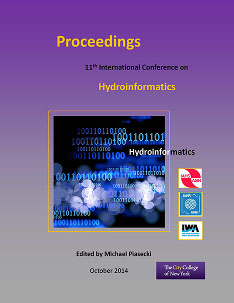Document Type
Presentation
Publication Date
8-1-2014
Abstract
In April 2010 the Water Services Regulation Authority in England and Wales, OFWAT, introduced the Service Incentive Mechanism (SIM) which rates water companies on their performance based on customer satisfaction and either reward or penalise them. In view of this, it has become extremely important for water companies to lower customer complaints due to drinking water discolouration; which is approximately 34% of all customer complaints. Presently, most water companies identify high discolouration risk regions in water distribution networks (WDNs) by selecting areas in the network with high Iron (Fe) and Manganese (Mn) concentrations from their random sampling. With about 315,000 km of water mains in England and Wales, monitoring Fe and Mn concentrations will always be a very difficult and expensive task. In this paper, an artificial neural network (ANN) model was developed to predict Fe and Mn accumulation potential using relevant biological, chemical, hydraulic and pipe-related parameters. The model is able to predict Fe and Mn accumulation potential for each node in a given water supply zone (WSZ). It was observed that regions in the network with high Fe and Mn accumulation potential from the risk maps generated by the model for each of the WSZs also had high customer complaints due to discolouration. This model can be used as a tool to assist in reducing discolouration and customer complaints by helping water resource engineers to identify the high risk regions, investigate the causes of high Fe and Mn accumulation potential in those regions and if possible find solutions to them.


Comments
Session R54, Water Distribution Networks: Water Quality Aspects